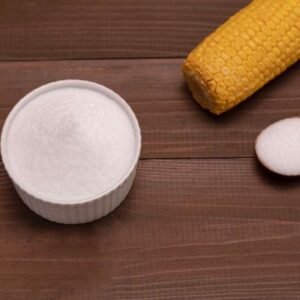
Persistent Nerve Pain Relief [NATURAL!]
For all my Irish readers, Happy St. Patrick’s Day! I hope you’re able to enjoy a fun celebration today.
But, if you’re one of the many folks dealing with burning, shooting, or tingling neuropathic pain that never goes away, celebrating is likely the LAST thing on your mind.
Neuropathic pain happens when something goes wrong with the nerves, making them misfire and send weird signals to the brain.
These signals produce pain even with no underlying tissue damage or injury. And the condition is incredibly difficult to treat.
But a new approach could FINALLY promise REAL relief for the countless folks battling this persistent pain.
Neuropathic pain differs from regular pain caused by injuries or inflammation because it can stubbornly stick around long after an injury or condition has healed.
People often describe shooting, burning, tingling, pins and needles, numbness, or itching sensations in the affected areas.
Nerve pain can be severe and debilitating, significantly reducing your quality of life. In fact, it’s often referred to as the “suicide disease” with links to depression, anxiety, sleep disorders, and suicidal ideation.
Most standard pain medications—from NSAIDs to opioids—provide little to no relief for this type of nerve-derived pain.
However, there’s some real hope for significant relief from an unusual natural source… chili peppers.
As counterintuitive as it sounds, research reveals the same chemical that gives chili peppers their signature spicy burn can provide lasting relief for many neuropathic pain sufferers.
High-concentration capsaicin patches (HCCPs) are used to treat various hard-to-manage nerve pain conditions.
Capsaicin is a compound found naturally in hot peppers that gives them their characteristic heat.
Capsaicin can cause a burning sensation by targeting and overstimulating pain-sensing nerves in the skin. However, it eventually makes the targeted nerves LESS sensitive, providing long-lasting localized pain relief.
Promising recent research shows HCCPs can successfully treat neuropathic back pain, post-surgical nerve pain, and postherpetic neuralgia (lasting nerve pain after a bout with shingles).
In the study, around two-thirds of patients had a significant drop in pain intensity after undergoing treatment with HCCPs. Many patients reported less frequent and severe pain episodes overall.
The nerve-numbing effects of the patches also allowed some patients to reduce their use of opioid medications, which is a SURE sign of significant improvement.
Now for an important warning.
When first applied, high-dose capsaicin patches CAN cause burning, stinging, and redness that may last a few days.
However, most folks with unrelenting nerve pain who try the patches report that the initial discomfort is worth bearing to experience the significant and long-lasting pain relief they can provide after repeated treatments.
Be sure to consult with your doctor BEFORE trying topical capsaicin treatments.
P.S. Slash your risk for THIS painful diabetic nerve condition.
Source:
Kern, U., Quandel, T., Theis, S., & Schubert, T. “Characteristics and outcomes of peripheral neuropathic pain patients with repeated applications of high-concentration capsaicin cutaneous patch: Results of a retrospective chart review in Germany.” Pain Practice. doi. org/ 10.1111 /papr. 13345
Written By Dr. Scott Olson, ND
Nearly 25 years ago, failed mainstream medical treatments left Dr. Olson in constant pain – and his health in ruins. And that’s when he did something REVOLUTIONARY. He began his career in medicine – and dedicated his life to uncovering the true, underlying causes of disease.
Through his innovative medical practices in Tennessee and Colorado, Dr. Olson has helped cure countless seniors from across America of arthritis… heart disease… diabetes… and even cancer. All without risky prescription drugs or painful surgeries.
View More Free Articles
A New Reason to Ditch Processed Junk
If you’ve ever walked the inside aisles of your local grocery store and thought, “This is all just junk,” your instincts were spot on. A new study published in the journal Thorax just added another red flag to the list of dangers linked to ultra-processed food—a 41 percent higher risk of lung cancer. That’s right....
When Being Winded on Stairs Is Serious (And When It Isn’t)
I had an athlete visit me recently because he experienced shortness of breath while climbing stairs. He is in great shape, so he was worried about what it might mean. “Doc,” he said, “I run five miles three times a week. Why am I huffing and puffing after two flights of stairs?” His concern is...
Study EXPOSES Hidden Danger Lurking in Your Car
We think of our homes and cars as safe havens. But according to a startling new study, they may be flooding your lungs with microscopic plastic particles—every single day. Researchers in France recently found that adults inhale an average of 68,000 microplastic particles daily from indoor air alone. To put that in perspective, that’s about...
Mailbag: Is Modern Food Making You Snore?
“What can cause snoring, and is there a way to correct this issue?” —Seeking Silence Hi Seeking, Snoring happens when the soft tissues in your throat relax and vibrate as air passes through during sleep. While several factors can cause snoring—from sleep position to nasal congestion—I want to share one trigger that might surprise you....
Simple Food Swap SLASHES Dementia Risk 28%
Let’s be honest… who would jump at the chance to cut their dementia risk by 28 percent. And no, you don’t need to run marathons, survive on broccoli, or learn to play the zither (whatever that is) to make it happen. All it takes is one easy swap—something that’s probably already in your refrigerator. Researchers...
This SMART Floss Exposes Hidden Health Danger
Scientists have created dental floss that doesn’t just clean between your teeth—it also tracks your stress while you’re flossing. Now, I know what you’re thinking… “Great—now even flossing is going to stress me out by telling me how stressed I am.” But this fascinating new tool from Tufts University could be a game-changer for understanding...
Is This "Safe" Sweetener Damaging Your Brain?
The headlines are alarming… “Popular Sugar Substitute Linked to Brain Cell Damage” and “Erythritol Could Damage Critical Brain Barrier” are just two of the dozens I’ve spotted recently. But before you toss every sugar-free product in your pantry, let’s take a closer look at what this study actually shows—and what it doesn’t. The latest research...
This Summer Threat Could SPIKE Your Blood Sugar
Picture this… It’s another scorching hot summer day. You crank up the air conditioning while watching the weather forecast, which predicts yet another “record-breaking” heat wave. It’s starting to feel like just another miserably uncomfortable summer. But what you might not realize is that—if you have diabetes—those rising temps could do far more damage to...
Move Over Yogurt—5 Foods That Pack MORE Probiotics
Let’s talk about your gut. The microbiome is the collection of trillions of bacteria and other tiny organisms that live in and on your body—especially in your gut—and help keep you healthy. I’ve written often about how vital it is to maintain a healthy microbiome. And you might have dutifully added yogurt to your shopping...
Is Your Heart Older Than YOU?
Maybe you feel young for your age. Good energy, decent sleep, eating your veggies. But what if I told you your heart might be a decade older than the rest of you? That’s exactly what researchers at Northwestern University found in a new study published in JAMA Cardiology. The average American woman’s heart is about...









